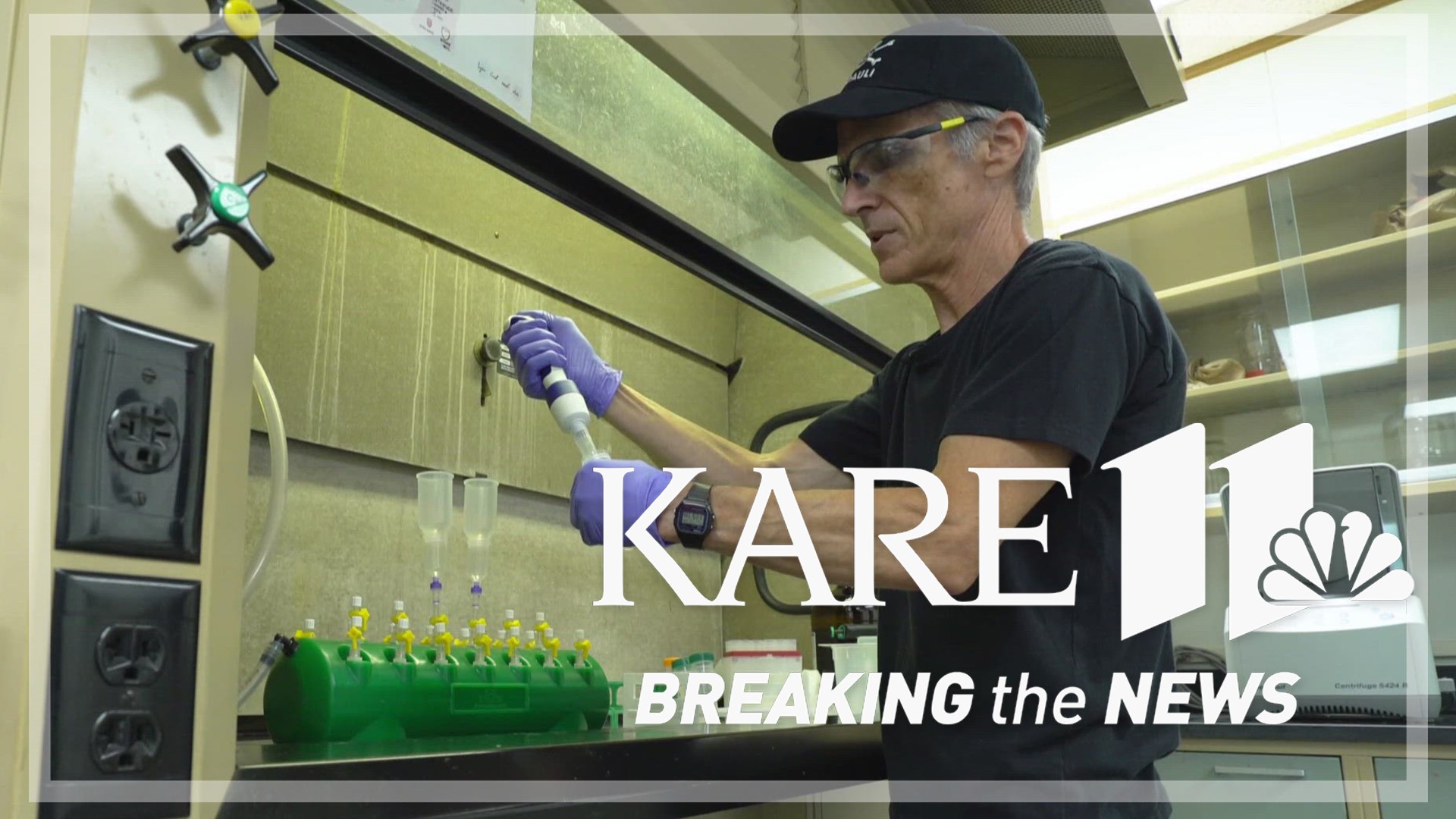MINNEAPOLIS — The same disease-tracking technology used to monitor COVID levels in Minnesota wastewater will be put to work in search of other viral bugs.
The University of Minnesota Medical School will lead the effort in conjunction with the Minnesota Department of Health.
"At this point we’re exploring other viruses like RSV and influenza," Sara Vetter of MDH's Public Health Laboratory told KARE.
"We don’t know yet if they are going to be useful pathogens to look for in wastewater but we’re going to gather the data and take a look."
Dr. Timothy Schacker, the medical school's vice dean for research, said the first task will be establishing a baseline to gain an understanding of what other viral bugs can be monitored the way COVID was.
"There’s a lot to do. Does influenza get into wastewater in any predictable fashion? We have to answer that question," Dr. Schacker told KARE.
"We have to know what the levels mean. So, it’s really what we did at the beginning with Sars-covid-2, we’re now doing with RSV and influenza."
That will involve some sophisticated science, done in conjunction with national partners.
"We’re also with the NIH now, the vaccine research center, to develop a sequencing-based platform so we actually sequence the RNA of all of the bugs that are in the wastewater," Schacker explained.
"And we can then know. We’ve got a list of what’s there, if there are things we weren’t expecting and they’re things we're concerned about, we would know that."
Wastewater surveillance of SARS-CoV-2 in the Twin Cities was mainly done by the Metropolitan Council in partnership with the U of M's Genomics Center. The Met Council's wastewater dashboard drew much attention among the public and medical researchers as it was updated weekly.
The Met Council also shared samples with the University's Medical School, which was monitoring roughly 40 wastewater plants across the state to look for regional differences as well as trends.
The Met Council will continue collecting and sharing samples of wastewater with the U of M and MDH but will step away from the mode of testing and publishing results.
"We are moving towards a system that is more streamlined and more efficient," Vetter explained.
"And that means we’re going to be able to use our resources wisely and keep this program sustainable long-term. It gives us the opportunity to explore what else wastewater could be useful for, for example potentially some extra pathogens."
Wastewater testing has become one of the best ways to get a glimpse of future outbreaks because many who contract COVID now don't report it or don't seek medical treatment. That creates a gap in disease surveillance with agencies such as MDH.
"The gap comes when there’s COVID-19 activity, but people aren’t seeking healthcare because they’re not sick enough or maybe they’ve taken an at-home test," Vetter said.
"So, in those communities and those settings we don’t have a clear window in maybe what’s happening."
Wastewater surveillance has proved itself in the past to be an accurate predicter of what's coming down the pike.
"We knew in the Fall of 2021 that the levels of virus in the wastewater pretty accurately predicted the clinic events that were coming up in seven to 10 days," Schachter said.
"So, we knew when the surge was coming, the surge in hospitalizations and that sort of thing."

